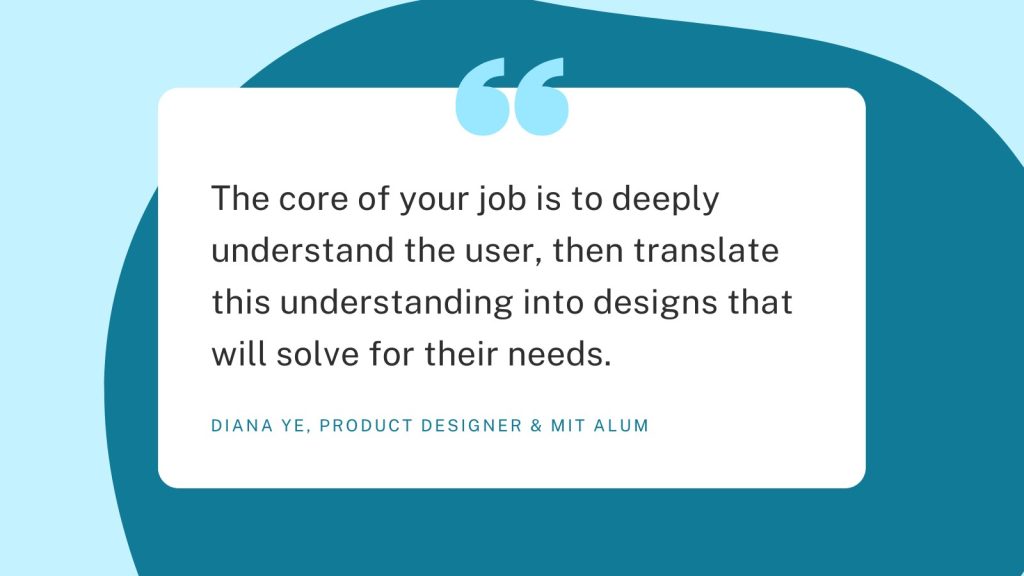Insights and tips: An MIT alum’s advice for aspiring product designers
Diana Ye is a product design leader and MIT alum who earned an SB in Brain and Cognitive Science. She generously offered the following advice to aspiring product designers.

What do you wish you knew as a student before entering into the product design field?
That it existed! When I was an undergrad (class of ’09), the field of UX and product design was still emerging. So, you are all already a step ahead!
I wish I had done a bit more research about the different types of design and the nuances between them. At the time, since I was switching into the field from being a Course 9 pre-med, I was just so excited about anything design-related that I applied to anything with design in the title, but advertising design is a very different field than product design. Our field and titles are constantly evolving, but having a good high-level understanding of the difference between a full-stack product designer and some of the sub-specialties like visual designer, user researcher, motion designer, design ops, UX content writer, etc. will help you be more thoughtful about where you apply and sound more focused during an interview.
While what I had learned in Course 9 about the brain wasn’t always directly applicable, what was relevant was my ability to solve problems by focusing on people and how their mind works. As a former scientist, I rarely fell in the trap of mistaking myself for the user – I knew the goal was to understand others.
What advice do you have for someone in the midst of a product design internship/job search?
Imposter syndrome is real, but don’t stress too much if you don’t have much experience.
We always look at resumes first, and if we are willing to talk to recent graduates at all, then we are hiring more for your potential than for your current skill set. If you can show a genuine curiosity for our problem space, empathy towards users, and willingness to learn, that’s a great start. Also, we look for people who are humble, self-aware, and seem like they would work well with others, which is not dependent on experience. Design is an extremely collaborative field – we ask for feedback all the time from users, product managers, engineers, and more. Ego and being a jerk will definitely hold you back.
Do your homework on the company before an interview. No need to spend hours, but at least go on their site and try to get a sense of their product, users, and problem space. I will always ask candidates, “Why are you interested in joining this company?”. Doing your homework is not just for the interview, but it’s also a favor to yourself. If you haven’t done the thought exercise of “why would I want to join this company? What about it is personally appealing? Could I imagine myself there?”, you are also wasting your own time by applying to places that may not be a good fit.
Finally, the biggest mistake I see people make when sharing case studies is forgetting to tie their design decisions back to the user. The core of your job is to deeply understand the user, then translate this understanding into designs that will solve for their needs. It’s always surprising to me how people will forget one or both parts of this, and approach design as if it’s some theoretical math problem or a pretty art project. We are always aiming to solve real problems, for real people, and complex flow diagrams and beautiful mockups are just a means to that end.
- Be sure to explicitly speak to how you solved for users when sharing your work – don’t assume it’s obvious to someone who is new to the user and project.
- Some examples of how you might share this:
- We learned [a surprising or interesting insight] about users, which was not addressed by our current product because [of reasons]. This led us to change our design by [describe changes].
- In our research, we learned users had [this pain point], which made them feel [this emotion]. In this part of the design, I solved for this pain point by [design decision], resulting in [impact on a success metric like completing a task, being more efficient, etc] and feeling [ideal emotional state].


